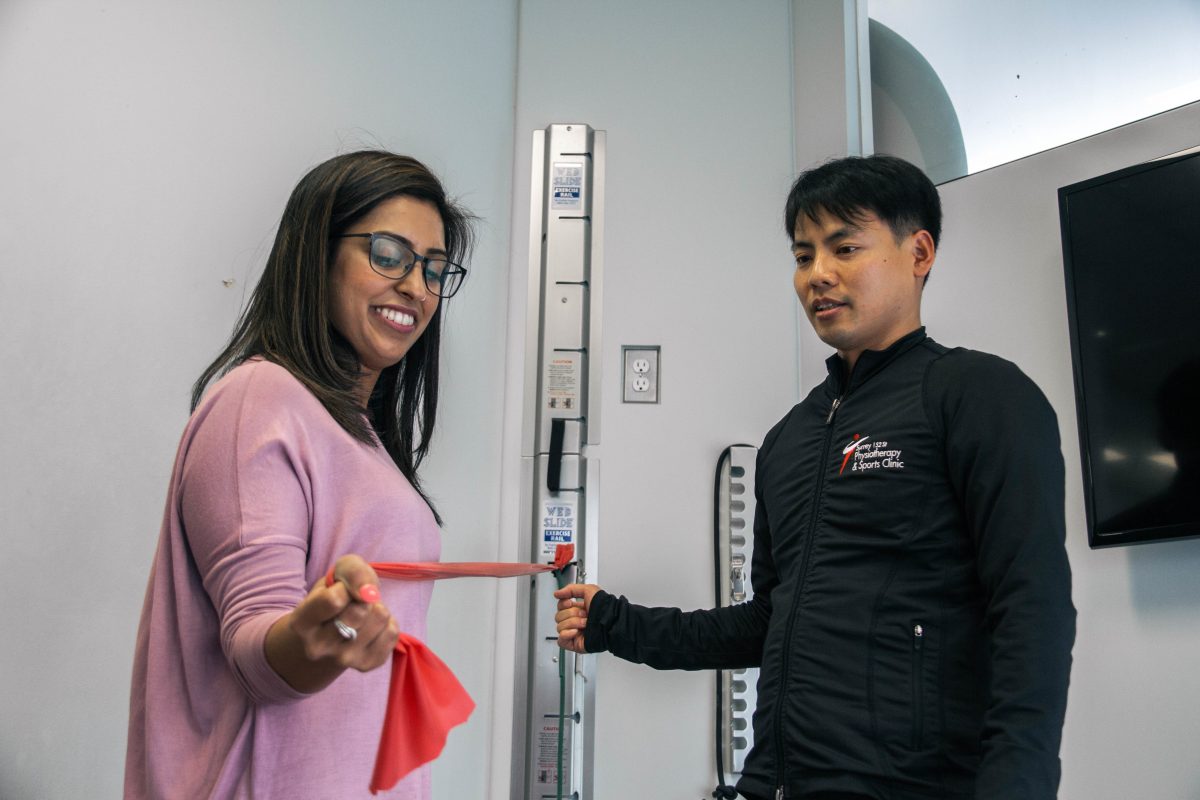What are Resistance Band Exercises?
Resistance bands are strips of stretchable rubber that come in a variety of resistance levels and colours. They are used to perform strengthening exercises for your muscles by providing resistance during the entire movement, causing your muscles to work both concentrically (while shortening) and eccentrically (while lengthening).

When would I consider Resistance Band exercises?
Strength training is an integral part of rehabilitation after an injury. It is important to do strengthening exercises to regain the muscle power you have lost, correct any muscle imbalances and to prevent re-injuring yourself. Resistance bands are an inexpensive, effective and versatile method of strengthening muscles in a functional way.
Indications for using Resistance Bands include:
- Correcting muscle imbalance
- Posture correction
- After joint sprains e.g. twisting the ankle
- Post-surgery e.g. Joint Arthroscopy, Knee and Hip replacement and rotator cuff repair
- Shoulder impingement syndrome
- Improving balance and hip control
- Stabilizing hyper-mobile joints
- Correcting training techniques
- Core strengthening

Are Resistance Band exercises preferred to dumbbells, barbells or machine weight exercises?
In order to return to your daily activities or a specific sport, it is important to not just strengthen the individual muscles but to do functional strength training. Functional strength training focuses on doing exercises that involve rotation, pushing, pulling and diagonal movements, to mimic day to day movements we do. Exercises with weights only apply resistance in one plane using gravity, limiting you to bending and straightening movements, while with resistance band exercises can be applied in all planes of motion simultaneously. This prepares you to return to rotational sports such as hockey, golf or baseball, or household activities such as making a bed.
Every resistance-training exercise has a strength curve. The weight you can lift from the starting position may be less than the weight you can lift when the muscle is fully contracted. When using resistance bands, the resistance at the start of the movement is less and increases as you complete the movement.

Tips when training with Resistance Bands:
- While doing any resistance band exercise a neutral posture should be maintained. Concentrate on aligning the neck, shoulder blade and shoulder joint, pelvis, lower back, hips while contracting the core abdominals and bending the knees slightly.
- Use the band strength prescribed by your physiotherapist/kinesiologist and stick with the prescribed sets and repetitions. Remember to rest between every set as directed.
- Perform all exercises in a slow and controlled manner.
- Avoid going into extreme joint positions when exercising e.g. locking the joint at the end of a movement.
- Breathe evenly while performing these exercises. Exhale while contracting the muscles and inhale while releasing. Don’t hold your breath.
- Start off by performing the exercises without the resistance band until you are comfortable with the movement, then add the resistance.
For more information on all of the services we offer at Allied Physiotherapy Health Group, please visit our services page here.